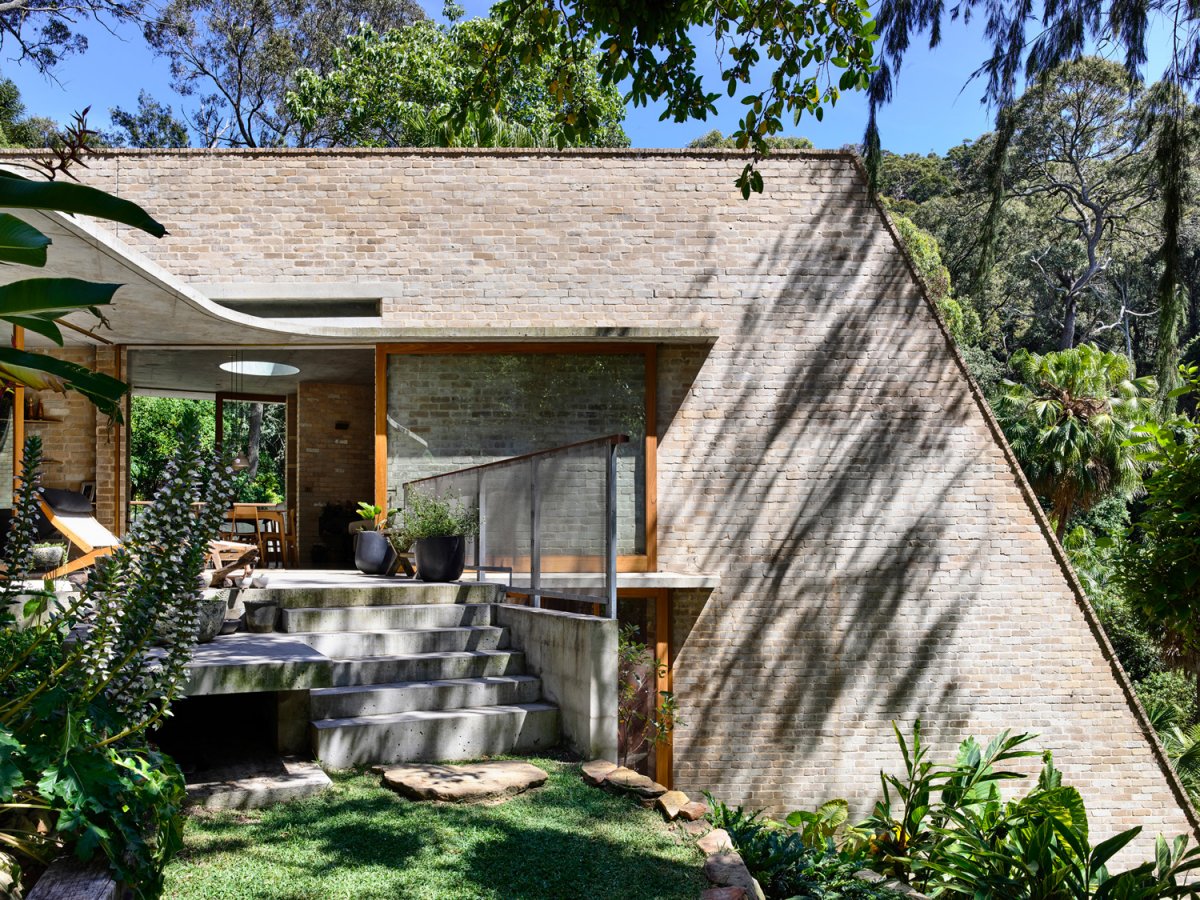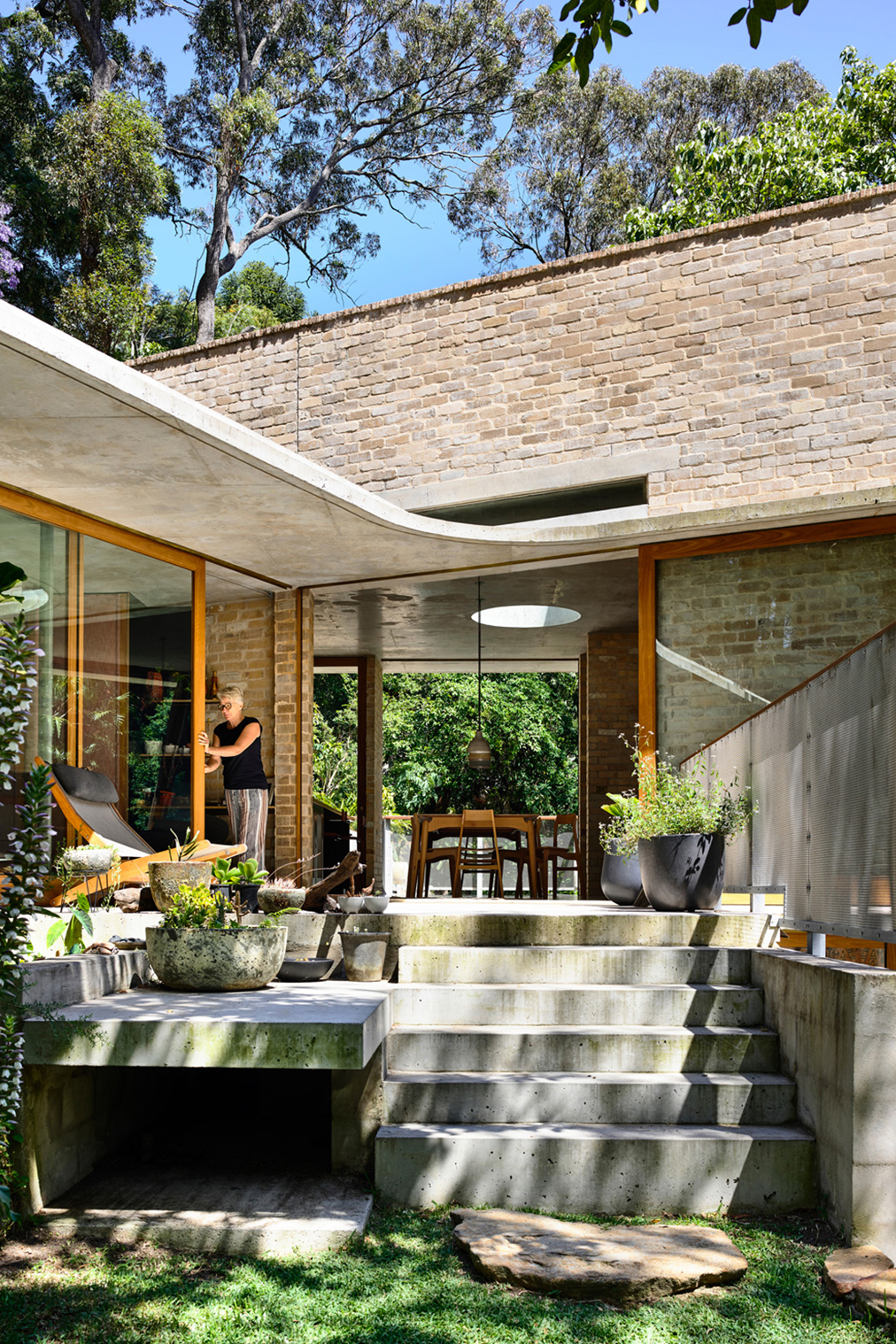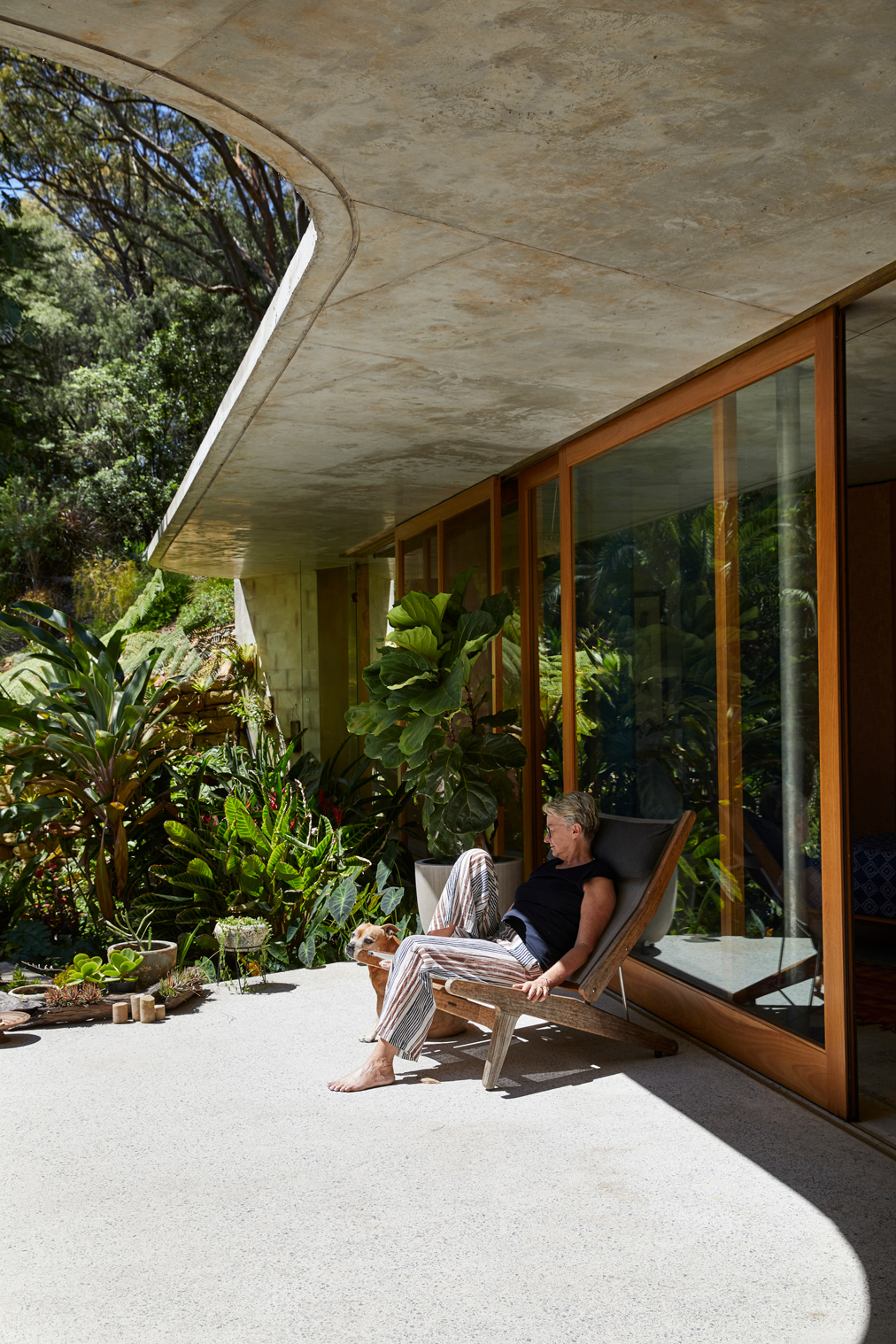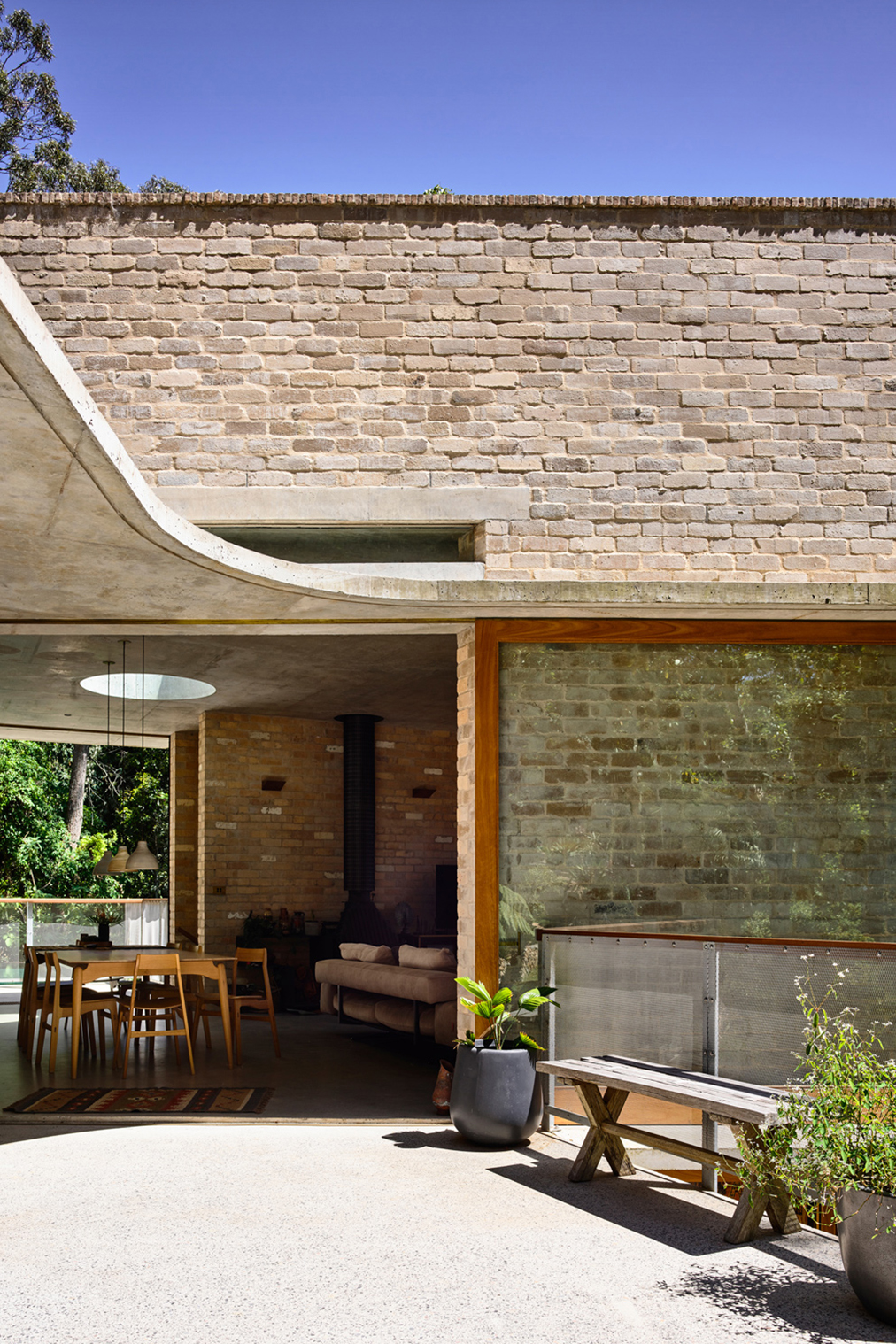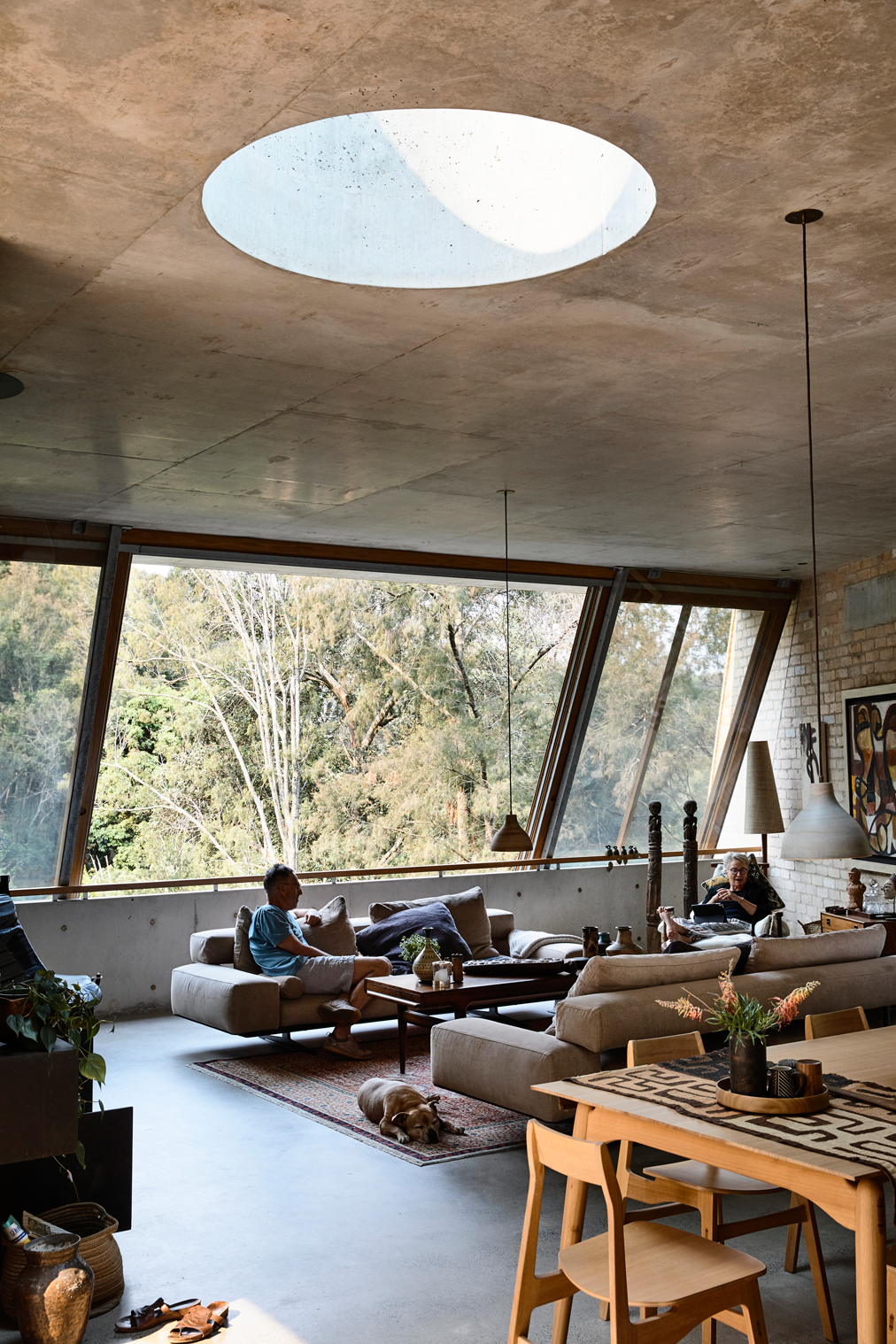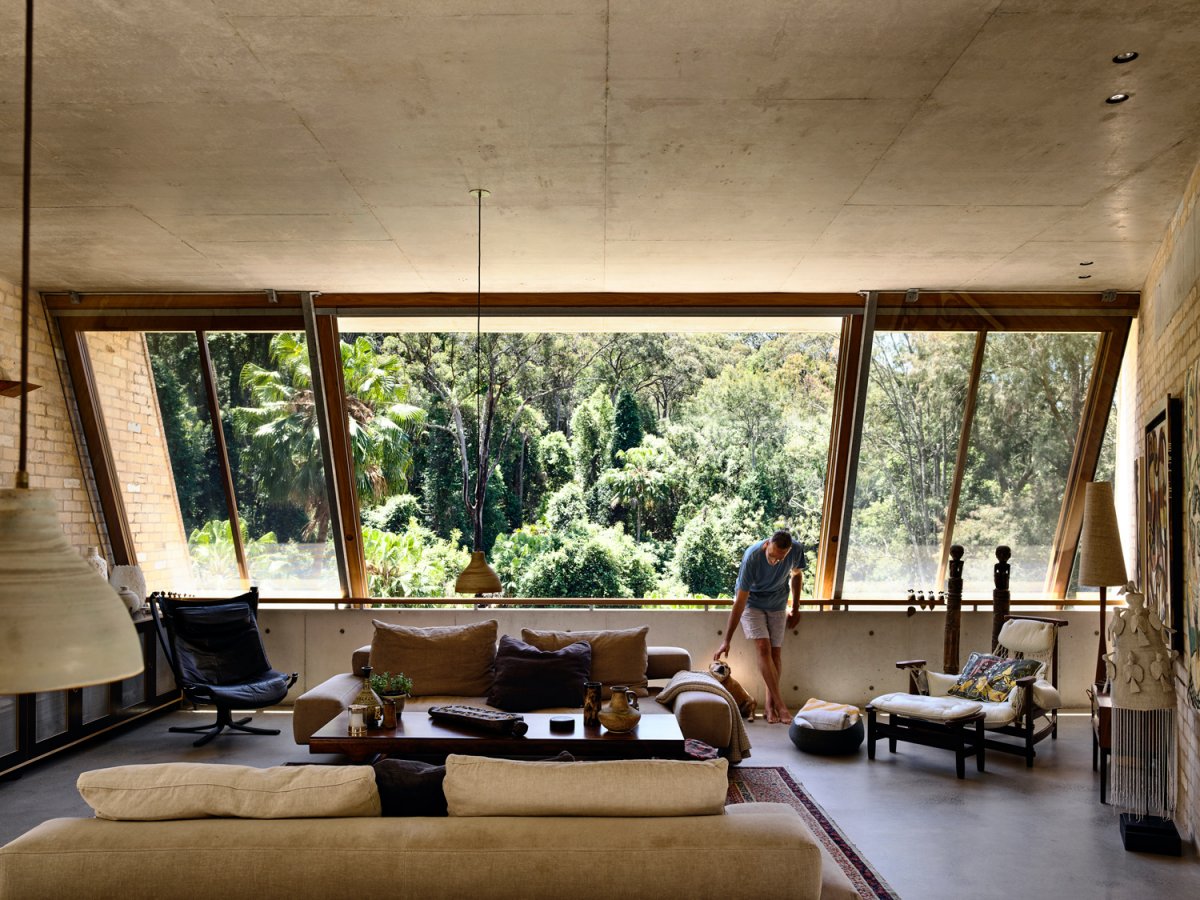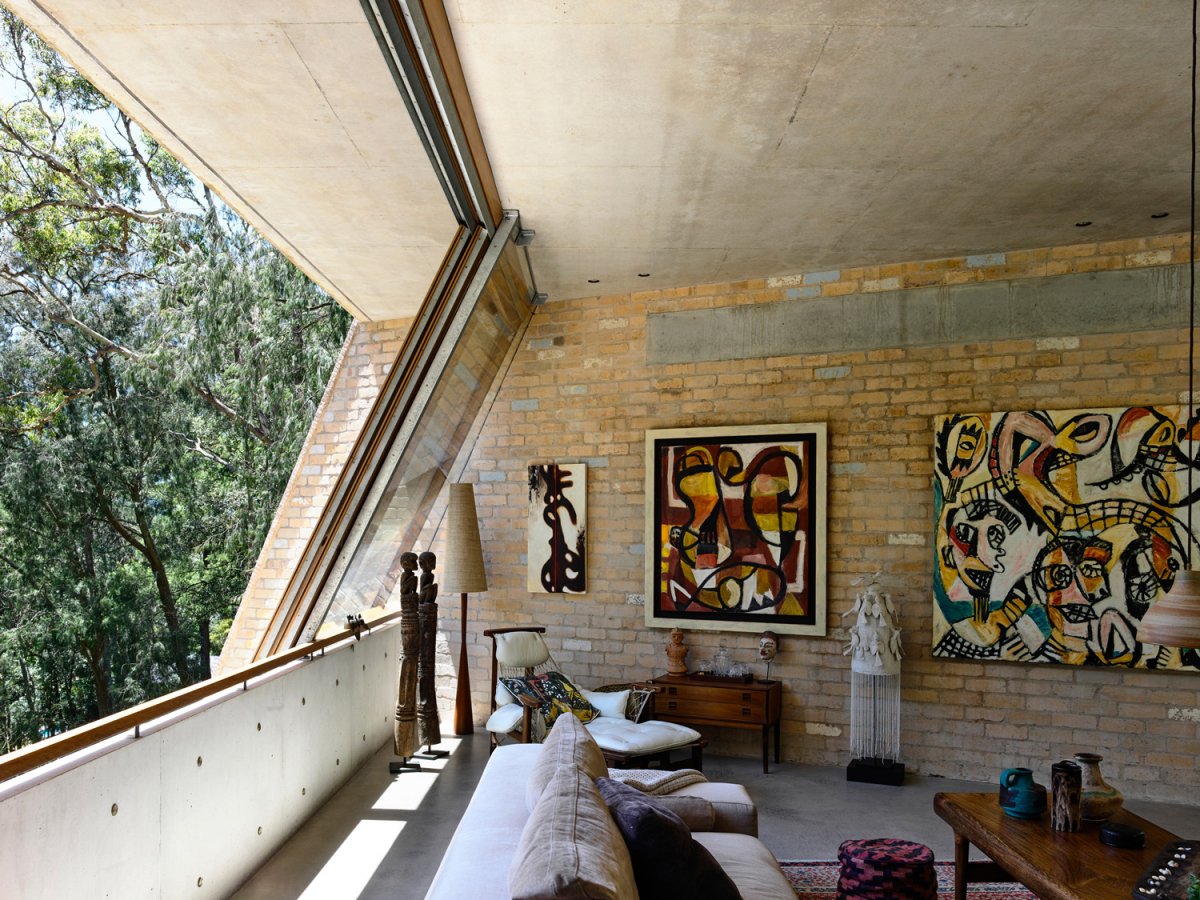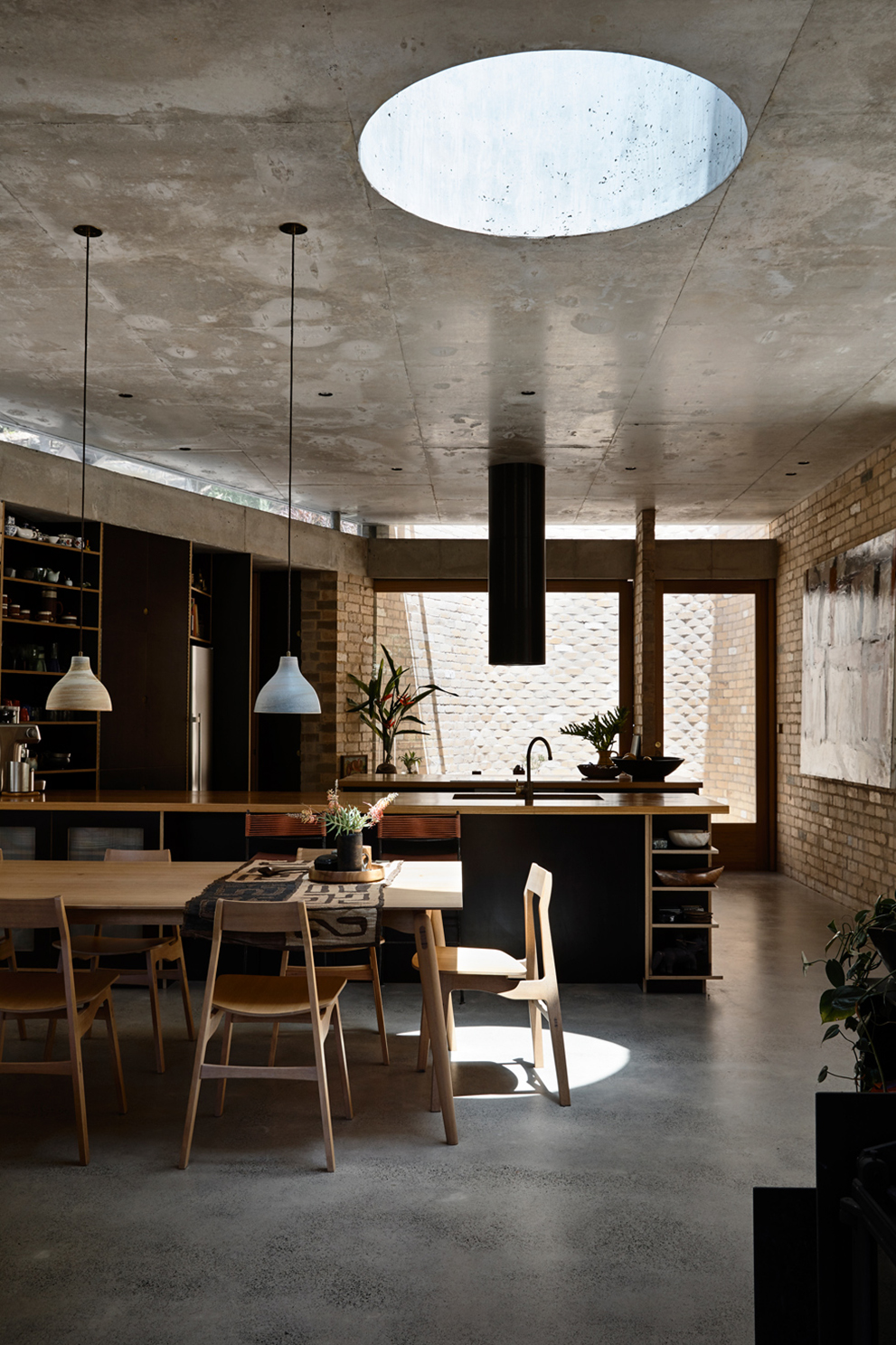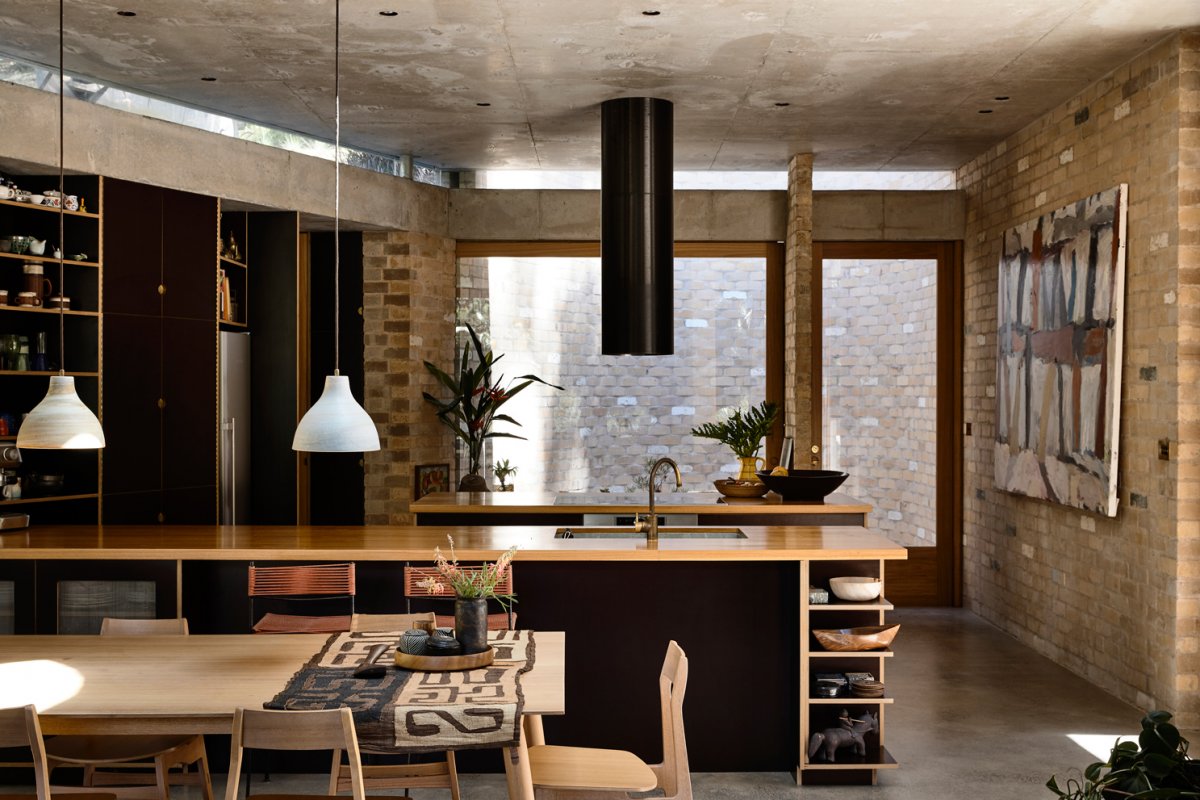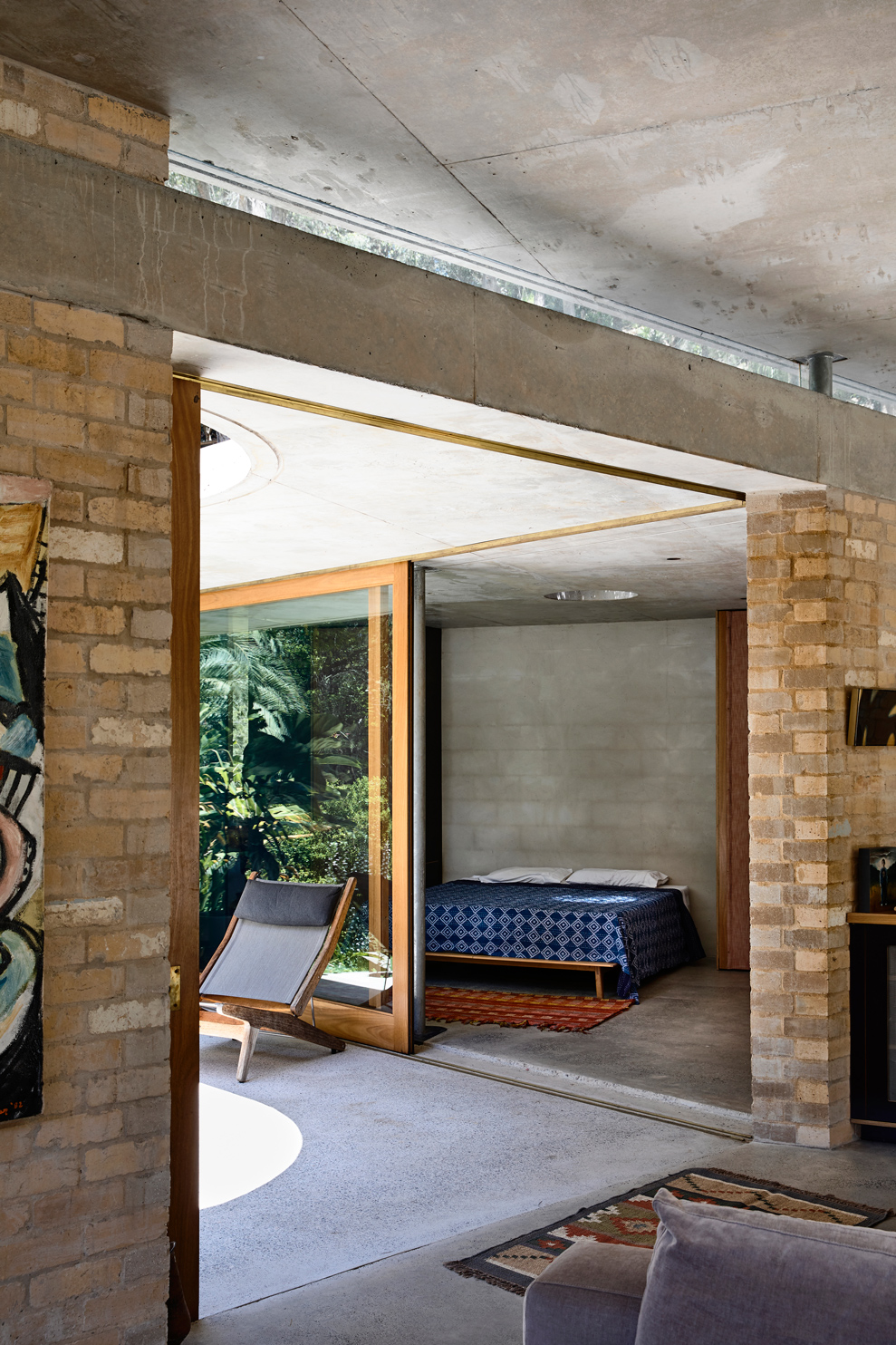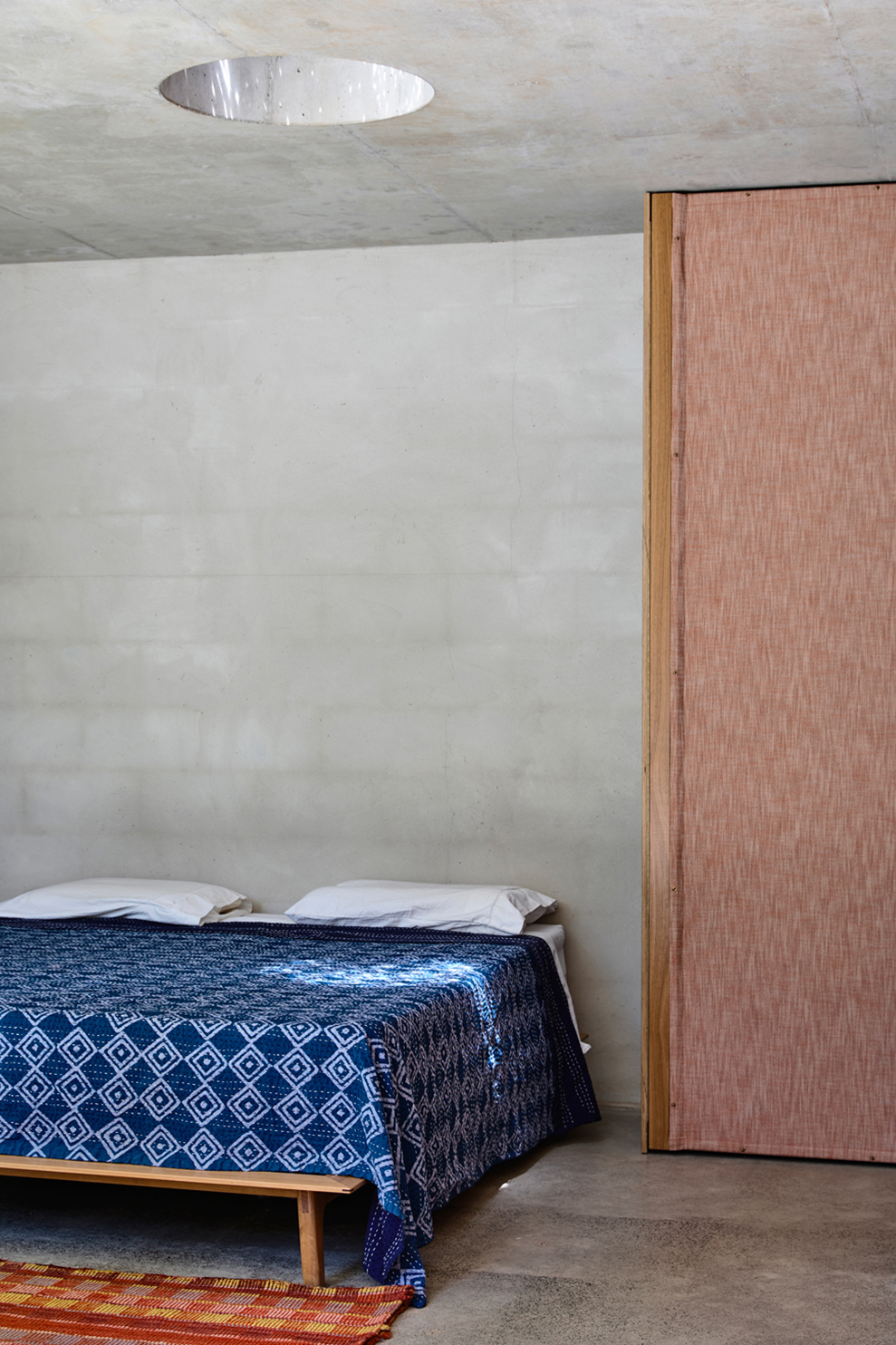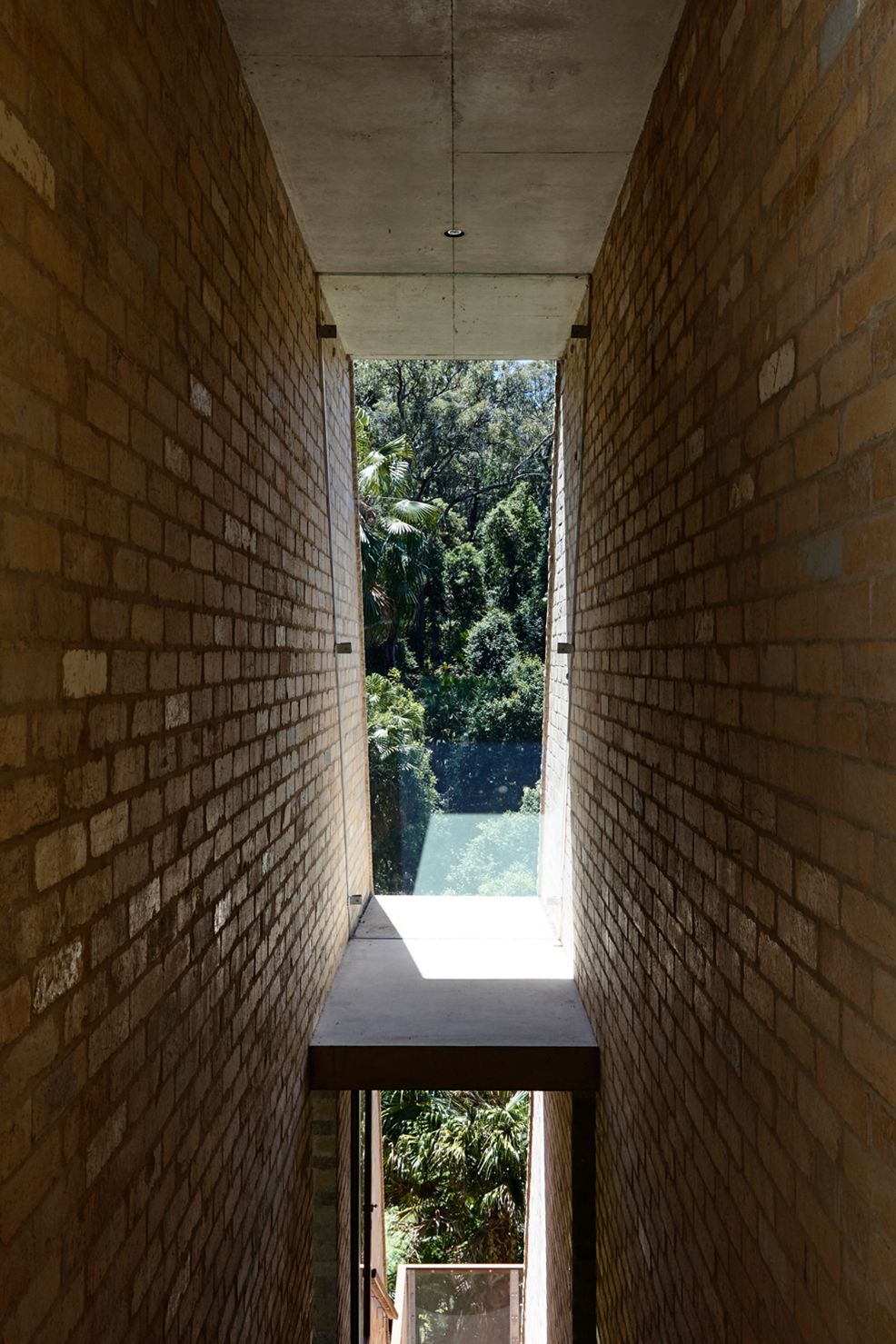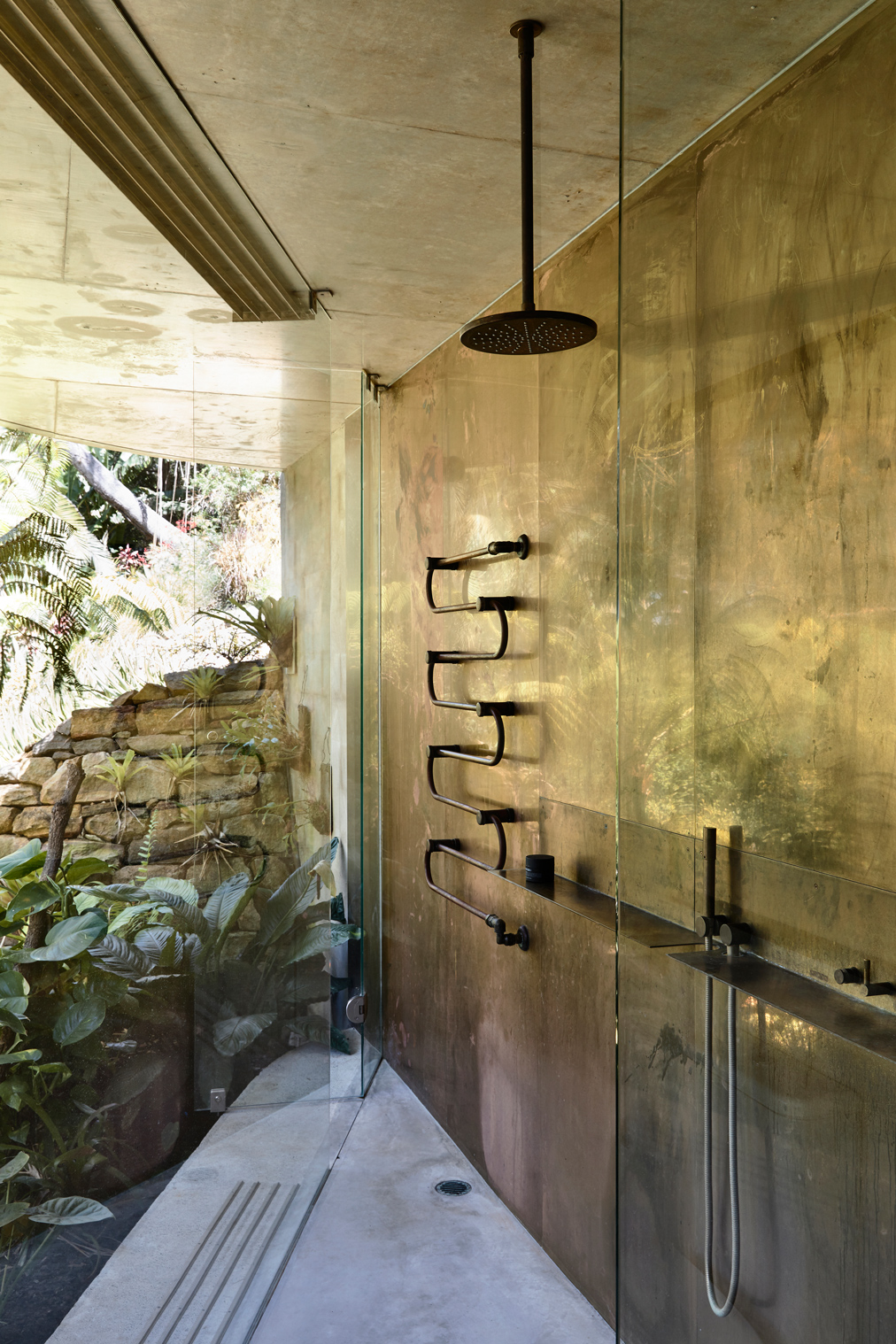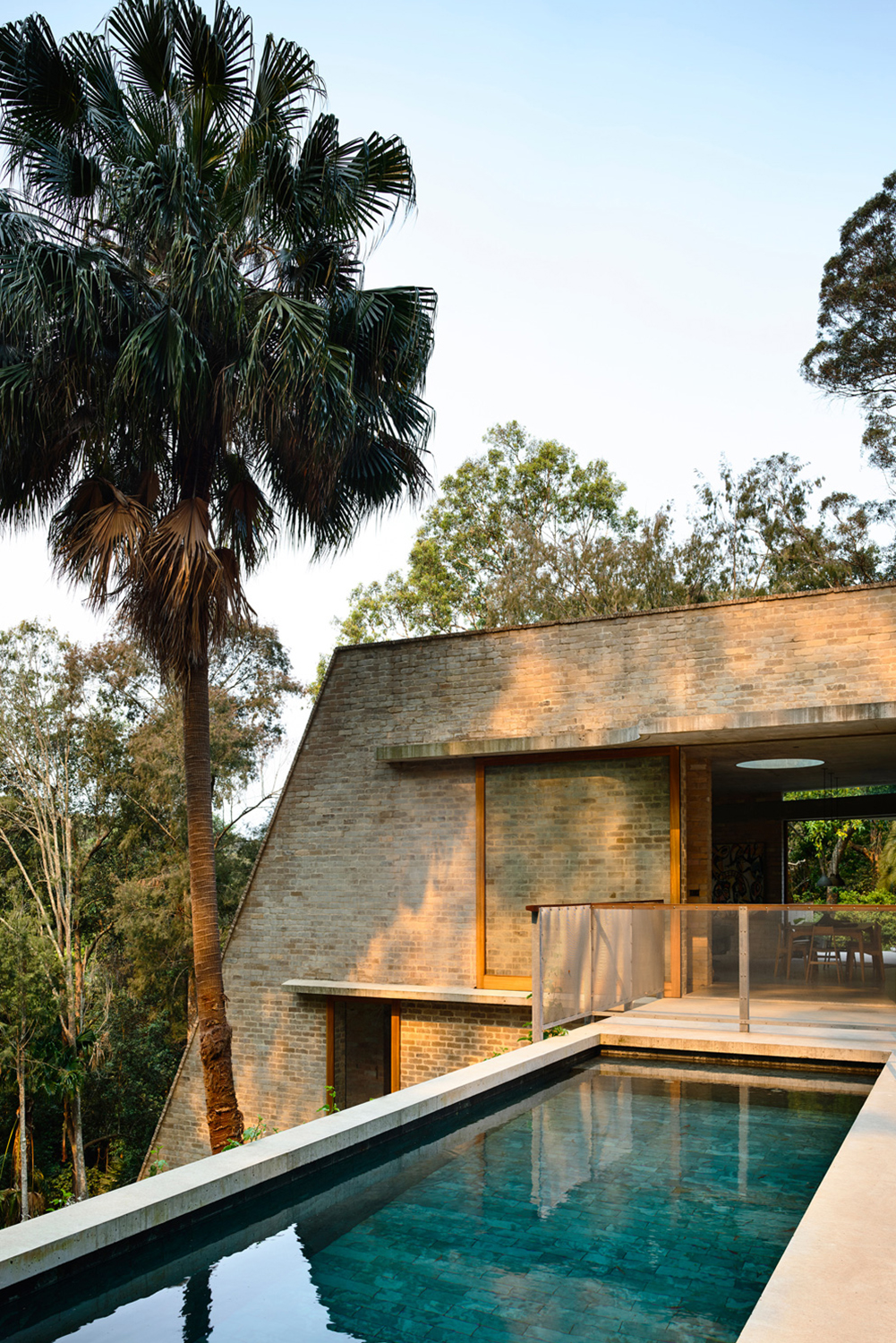
Emerging from the hillside, Cabbage Tree House by Peter Stutchbury Architecture is a built manifestation of place, whose purpose is to heighten the understanding and emotional experience of the land that informs the architecture.The house is the outcome of time the architects and clients spent with the land, learning its qualities and spatial topography.
Through coming to understand the landscape’s character, a sense for how a building might behave with the site was developed.From this process, a triad of three elements, in a geographical sequence of sorts – a flat plateau above a steep slope with a creek below – was established, from which the nature of the building as an element of connection became clear.
A flat plateau offers space that can be used for recreation, whether in the form of vegetable gardens, somewhere to sit outdoors in the sun, a backyard cricket pitch, or a place to gather with friends and family.In order to devote the flat area of the land to recreation, it was consequential to site the building into the hill itself, acting as stairs between the plateau and the creek.
With the extruded masonry structure acting as an extension of the hillside, Cabbage Tree House engages fundamentally with the land of which it is now a part. And through the fusion of the built form and the earth, the building becomes a connecting force between the land and its inhabitants. Peter describes the building as a “sky-ground connection”. One approaches the building from the elevated plateau at the top of the hill, and then descends down the hillside through the house, with the building acting as a conduit within the landscape.
This progression draws one down to reconnect with some of the most primal of human imperatives. And, in its cave-like nature, the house is elemental, serving to amplify the experience of the land.In doing so, the project offers a challenge to the relevance of contemporary housing that facilitates screen-focused experience.Instead, throughout the design the architects questioned how the building may enable the revisiting of ancient values of shared care, sociability, awareness and consciousness by emphasising both the most essential experiences of life and the narrative of the site.The interior is defined by a restrained material palette, and features furniture by Adam Markowitz of markowitzdesign.
While the building is cave-like, it is not cavernous. The architects’ sensitivity to scale and emphasis on the quality of the light within the spaces of the home results in a building that devotes itself to habitation with care. When viewed from below, the scale of the architecture appears grand yet, in reality, Cabbage Tree House is not large. Each space is modest and restrained, reflecting the architects’ and clients’ intent to pare back the house to only that which is essential.
On this basis, the ceiling in the bedroom is slightly lower than in the living room. Through this compression of space, the bedroom promotes a greater sense of protection appropriate to its function. Meanwhile, the primal human imperative to seek shelter is balanced with the equally fundamental pull towards sunlight. Because the house is sited with its back to the hill, it was necessary to introduce light deeper into the home.
Drawing on a deep respect for the land, Cabbage Tree House is an exploration of how the built environment and the natural world each impact upon the other. Above all, it is a representation of how – consciously, deliberately and with reverence – architecture can form a relationship between human beings and the landscape in which they live.
- Architect: Peter Stutchbury Architecture
- Photos: Derek Swalwell
- Words: Rose Onans

